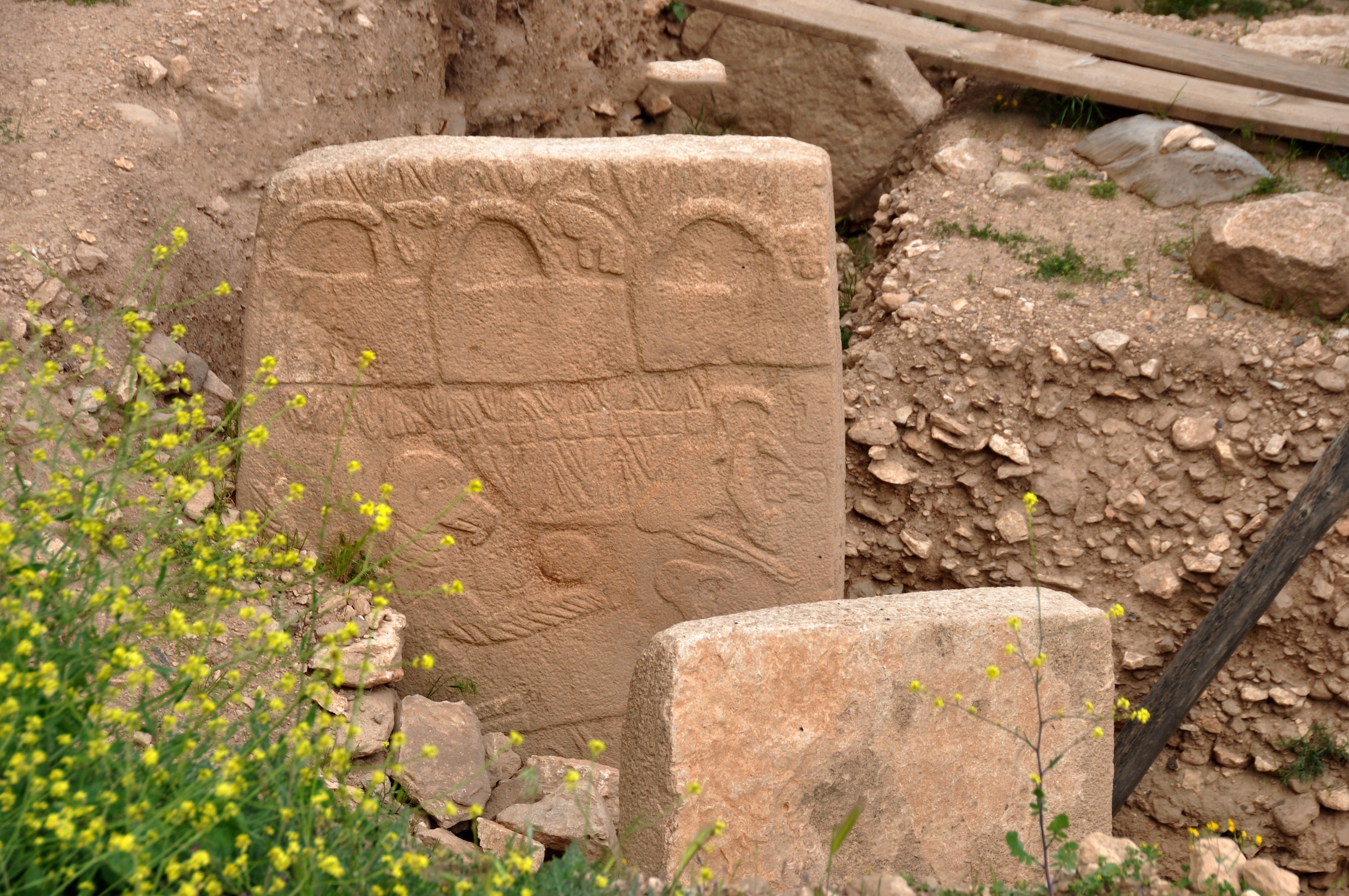Scientists at the University of Edinburgh may have found the world’s oldest lunisolar calendar on the pillars of Gӧbekli Tepe, a Pre-Pottery Neolithic complex in Turkey, according to new research.
The discovery also points to a destructive comet strike as the possible basis for Gӧbekli Tepe’s intended use as the worship site of a religious cult.
A study published in Time and Mind: The Journal of Archaeology, Consciousness and Culture in June examines 12,000-year-old carvings that make up a purported lunisolar calendar with 12 lunar months and 11 extra days, which is said to be the earliest of its kind.
“Overall, it appears that naked-eye astronomical capabilities of ancient people were far in advance of what is generally assumed for this time,” Chemical Engineer Martin Sweatman, the study’s principal author, wrote in an email to Hyperallergic.
The new study revisits and decodes symbols on pillars at the site, originally excavated in 1994 by German archeologists. Megalithic pillars standing at about 18 feet (~5.5 meters) depict both abstract human figures and animals. Sweatman’s study identified 365 V-shaped symbols, representing single days, and square symbols demarcating 29 and a half-day lunar months. The final day on the calendar is marked by a “V” on the neck of a bird figure representing the summer solstice.
Sweatman drew on previous research on these symbols as markers of constellations to identify a prehistoric understanding of solstices.
“[The discovery] suggests the phenomenon known as ‘precession of the equinoxes’ was known at least 10,000 years earlier than generally thought, and used to write the dates of important cosmic events,” Sweatman wrote. Understanding the precession of the equinoxes — or tracking equinoxes by observing changes in constellations — was previously thought to be first achieved by the Greeks starting in 150 BCE.
Sweatman’s study also identified depictions of a comet impact known as the Younger Dryas that some scientists argue caused a mini ice age around 10,850 BCE, which lasted for 1,200 years.
After decoding the symbols from the etchings, Sweatman believes illustrations of snakes coming out of the bodies of birds and foxes on the pillars represent a meteor shower.
“On the front face of this pillar are 27 V-symbols, which we interpret to mean the meteor shower lasted for 27 days radiating first from the direction of Aquarius (the fox) and then from Pisces (the tall bending bird),” Sweatman said, adding that renderings of the purported comet strike found at the site support the hypothesis that Gӧbekli Tepe was likely constructed as part of a new religion brought about by the impact. The complex is already widely considered the oldest religious site in the world.
“[These symbols] suggest the Younger Dryas impact could have played an important role in triggering the origin of civilization,” Sweatman said.
